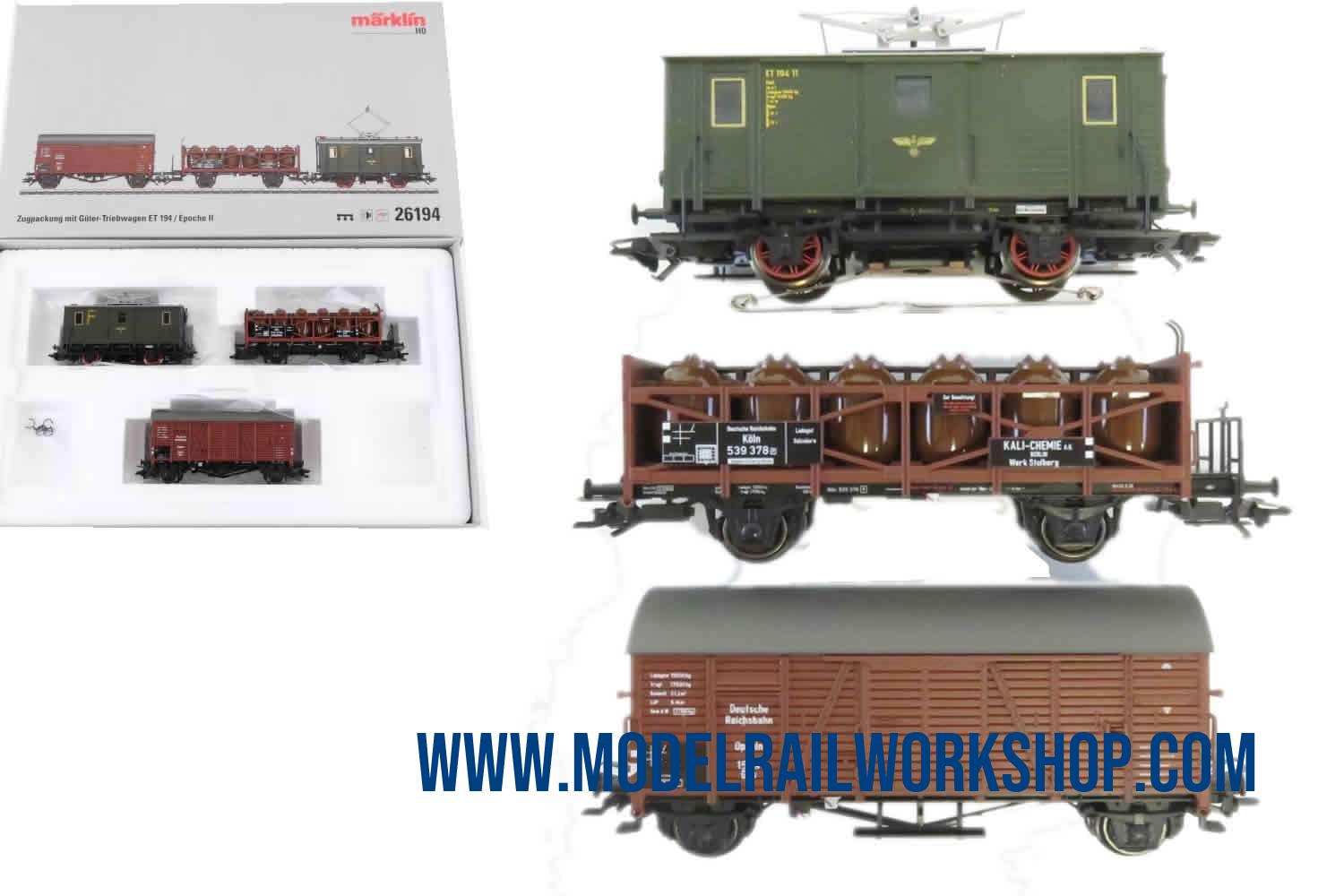
| KEY DATA | |
|---|---|
| Product Name | 26194 Electric powered rail car freight set with two cars - ET 194 |
| Object type | Locomotive-Electric |
| Product Line | Märklin MHI |
| Era | 1925-1945 (II) |
| Manufactured years | 2016-2018 |
| Type of housing | Synthetic/Metal |
| Length | 31,0 cm |
| Technology | Digital mfx |
| Railway company | DE-DRG Deutsche Reichsbahn-Gesellschaft (1920/24-1937) |
| Märklin RRP (Year) | 300€ (2017) |
| Koll valuation (Year) | 200€ (2022) |
| Url to Märklin | Klick to GoTo www.maerklin.de |
| No | Obj.No | Obj.txt | Category | Description |
|---|---|---|---|---|
| 26194-1 | ET 194 11 | DRG Eagle logo - Augsburg | ET 194 | Electric locomotive - green - 9,1 cm - metal |
| 26194-2 | 1549 | Deutsche Reichsbahn | Ghs | Cattle box car - brown with gray roof - |
| 26194-3 | 539 378 | KALI-CHEMIE AG BERLIN Wekr Stollwerk | Open flat car loaded with gas tubes - brown - 11,0 cm |
| Description | |
|---|---|